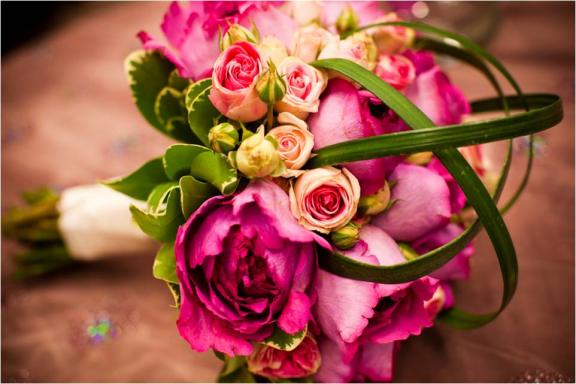
Styles in flower arrangement generally fall into two broad classifications: Line and Mass
Line
- Restraint is used in the amount of plant material so that lines can be seen clearly
- A lot of space is used within the design itself
- The beauty of the design lies in the individual qualities of the plant material
Mass
- Less space is used within the design
- The interest is created by the bouquet effect of massed colours, shapes and textures
- The external outline is emphasised and is often a recognisable geometric shape such as a circle oval or triangle.
Within the main classification of line and mass, the main styles are:
1. Traditional /Classical/Western Style
This refers to ordered mass arrangements which are often in the shape of a triangle, circle or oval. The chief characteristics are a mass of material with an emphasis on the outline of the arrangement. It is a popular style as it is highly decorative.
2. Geometric Style
Recognisable geometric shapes could be formed so that the outline conforms to a triangle, a circle, a Hogarth (S-shape)curve, a crescent etc. These styles can be either mass arrangements or line.
3. Free Form
This refers to designs without a definite geometric outline. The balance is asymmetrical and is achieved by assembling plant material with equal eye pull on either side of the design. For example, a long branch on one side may balance a brilliant flower on the other.
4. Abstract Design
This refers to arrangements that look more unrealistic than others. A great deal of space is used within the design. The material used will have a clear shape, exciting texture or strong colour and it may be used unchanged or it can be twisted, tied, bent or cut to achieve the desired pattern.
IKEBANA (Japanese/ Oriental flower arrangement)
The word literally means ‘living flowers’ in Japanese. These arrangements are more than an aesthetic grouping of plant materials. They are symbolic representations of an ideal harmony that exists between earthly and eternal life.
In each arrangement, there is an imaginary triangle. Its tallest line represents ‘heaven’. Facing and looking towards heaven is ‘man’. The lowest line, looking up to both, is ‘earth’.
- In all such arrangements, Heaven, man and earth are represented by means of three main branches.
- Shin, the main spray, is the tallest and symbolizes heaven; it ends to the central axis of the vase.
- This stem should be 1.5 to 2.5 times the height of the container.
- Soe, the second highest stem, represents man. It provides width to the arrangement and is about three-fourths the height of the tallest spray. This stem forms an angle of about 45 degrees with the rim of the container.
- Hikae, the lowest spray, denotes earth. This branch is about half as tall as the one signifying man and extends very little beyond the diameter of the container, forming an angle of about 115 degrees with the rim of the container.
- It is placed opposite the branch signifying man and is used to balance the arrangement. · The Japanese use tall vases as well as low bowls.
- They always use an odd number of flowers, as they believe that odd numbers are lucky as well as more aesthetic.
- Thus, in all arrangements, three, five, or seven flower sprays are used.
- There is no overcrowding and all the plant materials are seen as separate units, but as a part of the whole.
BONSAI
Bonsai is a horticultural art which is used to beautify hotel interiors, specially lobbies and restaurants. Bonsai literally means ‘a plant in a tray’. It is a creative art where the raw material is a living thing – a tree or a plant. In the bonsai school, the shape and properties of a full grown tree, as found in nature, are sought to be copied exactly in miniature style within the confines of a container.
Common Flowers and Foliages
Flowers
1. Roses
2. Arum lilies
3. Gladioli
4. Dahlias
5. Chrysanthemums
6. Gerberas
7. Tulips
8. Asters
9. Carnations
10. Tuberoses
11. Lotuses
12. Anthurium
13. Birds of paradise
14. Marigold
15. Orchids
16. Petunias
17. Hibiscus
18. Poppies
19. Gypsophila ( baby’s breath)
20. Bottlebrush
Foliage
1. True ferns
2. Asparagus ferns
3. Palm leaves
4. Umbrella Palms
5. Goldenrods
You can Also check : S Shaped Flower Arrangement